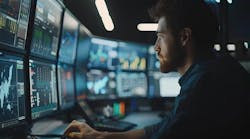Business Continuity and Disaster Planning: 3 Key Considerations
A new white paper from DartPoints outlines a modern approach to disaster recovery and business continuity by presenting three questions to consider when formulating your DR and BC plans.
Get the full report
From extreme weather to pandemics and an uptick in cyberattacks, businesses are increasingly aware of the importance of emergency preparedness – including having solid disaster recovery (DR) and business continuity (BC) plans. “Gone are the days when DR was synonymous with copying data from point A to point B and bringing virtual or physical machines online during a disaster,” according to a new white paper from DartPoints. Now, they say, “DR is so mission critical that the industry is building applications with it built right in.”
In their white paper, DartPoints outlines three questions to consider when drafting disaster recovery and business continuity plans.
The first question the paper asks you to consider will help you understand the kinds of risks that might impact your company, and what your initial response should be for each.
Business continuity requires you to keep operations functional during an emergency and immediately after. Disaster recovery focuses on how you respond after the emergency has concluded, when the business is undergoing the necessary steps to return to normal operations. – DartPoints, “A Modern Approach to Disaster Recovery and Business Continuity: What You Need to Know“
The second line of questioning focuses on your employees and where they’ll work if the building’s safety is compromised. “Your employees are the heart of your business, so ensuring they can continue working after a disaster is crucial,” the paper says.
The third question helps you to examine your data plan. DartPoints says that “a comprehensive continuity plan will either include a colocation or a Disaster-Recovery-as-a-Service (DRaaS) solution.” Either of these will ensure that your data, applications, and equipment won’t be lost or destroyed in case of an emergency, and that your employees will still have access to what they need, even if they’re working at a different location.
The paper also outlines critical information to consider when choosing a disaster recovery provider including security, cloud, and support capabilities.
Download the full report to learn more about this approach to disaster recovery and business continuity.

Kathy Hitchens
Kathy Hitchens has been writing professionally for more than 30 years. She focuses on the renewable energy, electric vehicle, utility, data center, and financial services sectors. Kathy has a BFA from the University of Arizona and a MBA from the University of Denver.





